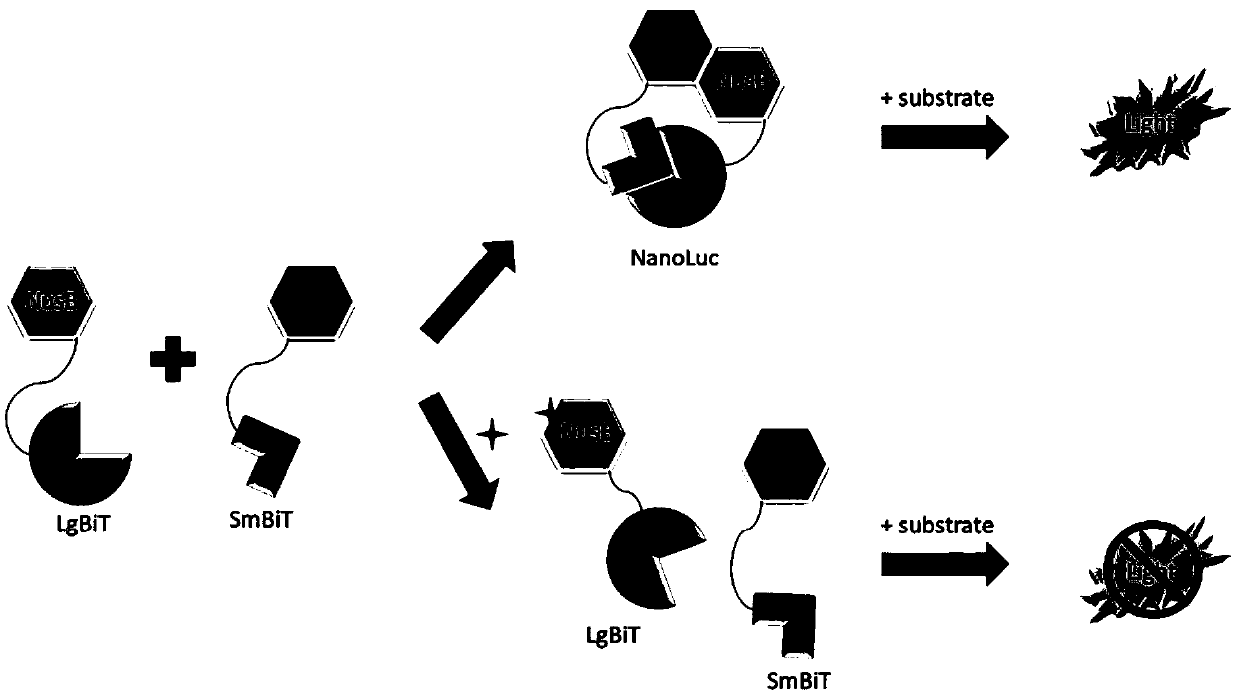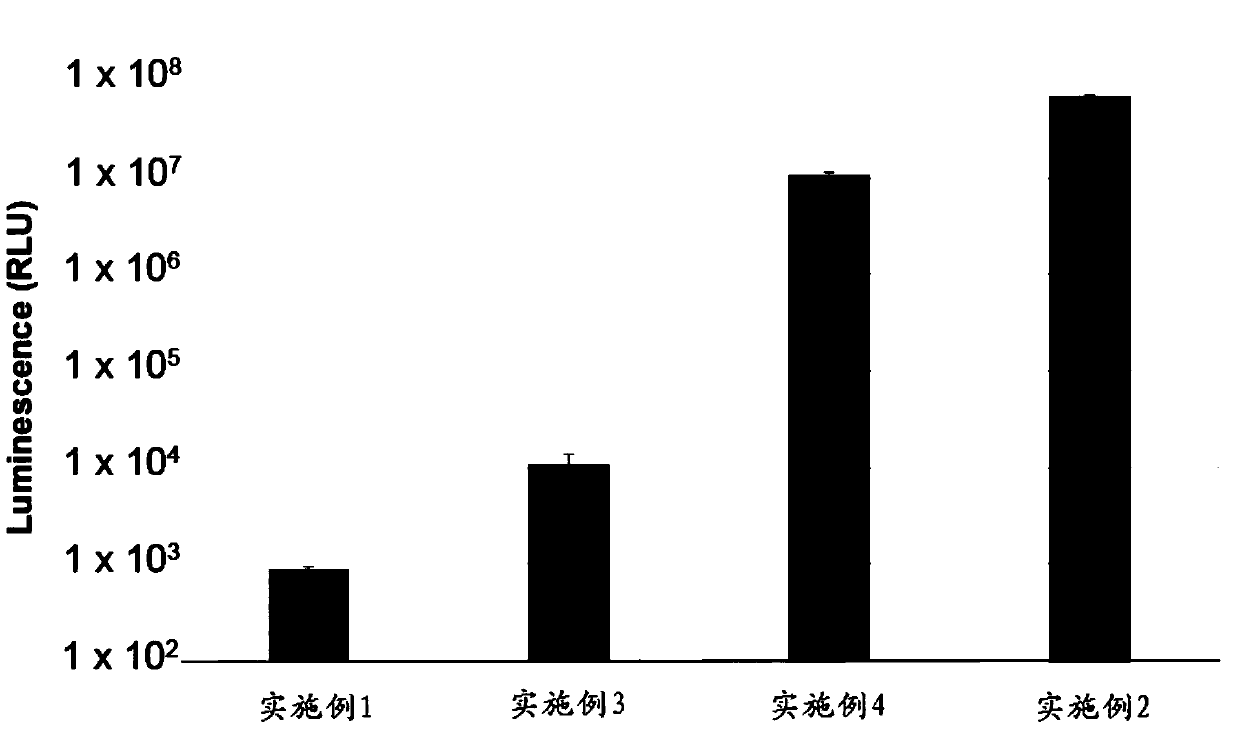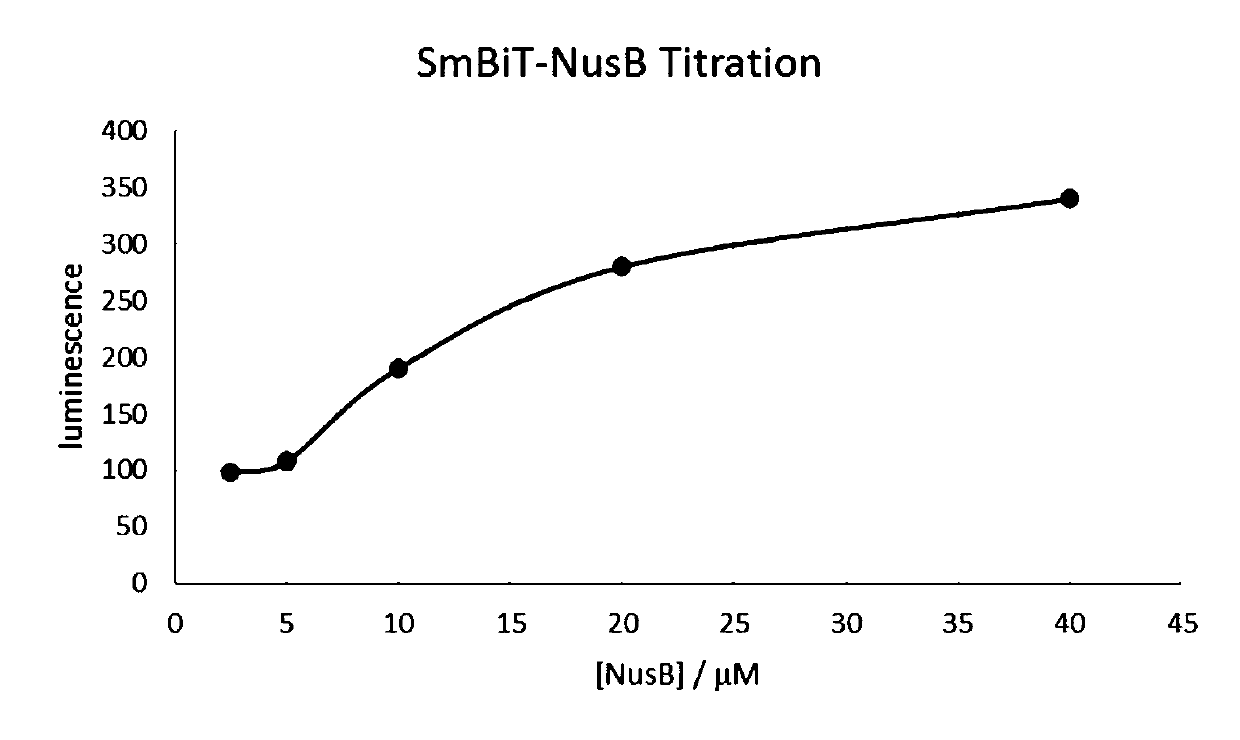Method for detecting interaction between proteins in vitro, detection kit and application of detection kit
An in vitro detection and protein technology, which is applied in the direction of biological testing, measuring devices, material inspection products, etc., can solve the problems of high false negative probability and long time-consuming, and achieve simplified operation process, saving time and cost, and detection of protein interaction The effect of action
- Summary
- Abstract
- Description
- Claims
- Application Information
AI Technical Summary
Problems solved by technology
Method used
Image
Examples
Embodiment 1
[0089] This example provides a method for detecting protein-protein interaction in vitro, which realizes the detection of protein-protein interaction outside the cell using bimolecular fluorescence complementation technology. Table 1 is the plasmid vector used in this embodiment, and Table 2 is the primer information used in this embodiment
[0090] The method for detecting the interaction between proteins in vitro in this embodiment specifically includes the following steps:
[0091] 1. Preparation of fusion protein A containing luciferase protein fragment SmBiT and NusB protein
[0092] 1) Construction of plasmid pCU231: bla
[0093] Select pETMCSIII as a plasmid vector for overexpressing N-terminal histidine-tagged recombinant proteins;
[0094] Use primers N smbit_F and N lg / smbit_R (Table 2) to amplify the smBiT-linker fragment containing the luciferase gene fragment smBiT from the plasmid pBiT2.1-N[TK / SmBiT]; The smBiT-linker fragment was inserted into the NdeI-NcoI...
Embodiment 2
[0118] This example provides a method for detecting protein-protein interaction in vitro, which realizes the detection of protein-protein interaction outside the cell using bimolecular fluorescence complementation technology. Table 3 is the plasmid vector used in this embodiment, and Table 4 is the primer information used in this embodiment
[0119] The method for detecting the interaction between proteins in vitro in this embodiment specifically includes the following steps:
[0120] 1. Preparation of fusion protein C containing luciferase protein fragment LgBiT and NusB protein
[0121] 1) Construction of plasmid pCU250: bla
[0122] Select pNG209 (Table 3) as a plasmid vector for overexpressing the C-terminal histidine-tagged recombinant protein; then, prepare the plasmid vectors pCU198 and pCU202 in sequence, the specific process is as described in step 1 of Example 1, wherein pCU202 includes Luciferase gene lgbit-linker fragment.
[0123] Use primers lgbit nusB_F and...
Embodiment 3
[0144] This example provides a method for detecting protein-protein interaction in vitro, which realizes the detection of protein-protein interaction outside the cell using bimolecular fluorescence complementation technology. Table 5 is the plasmid vector used in this embodiment, and Table 6 is the primer information used in this embodiment
[0145] The method for detecting the interaction between proteins in vitro in this embodiment specifically includes the following steps:
[0146] 1. Preparation of fusion protein E containing luciferase protein fragment SmBiT and NusB protein
[0147] Construction of recombinant plasmid vector pCU231: Escherichia coli was used for overexpression and purification to obtain fusion protein E.
[0148] 2. Preparation of fusion protein F containing luciferase protein fragment LgBiT and NusE protein
[0149] Construction of recombinant plasmid vector pCU236: bla Escherichia coli was used for overexpression and purification to obtain fusion...
PUM
| Property | Measurement | Unit |
|---|---|---|
| Light intensity | aaaaa | aaaaa |
| Light intensity | aaaaa | aaaaa |
| Light intensity | aaaaa | aaaaa |
Abstract
Description
Claims
Application Information
 Login to View More
Login to View More - R&D
- Intellectual Property
- Life Sciences
- Materials
- Tech Scout
- Unparalleled Data Quality
- Higher Quality Content
- 60% Fewer Hallucinations
Browse by: Latest US Patents, China's latest patents, Technical Efficacy Thesaurus, Application Domain, Technology Topic, Popular Technical Reports.
© 2025 PatSnap. All rights reserved.Legal|Privacy policy|Modern Slavery Act Transparency Statement|Sitemap|About US| Contact US: help@patsnap.com



